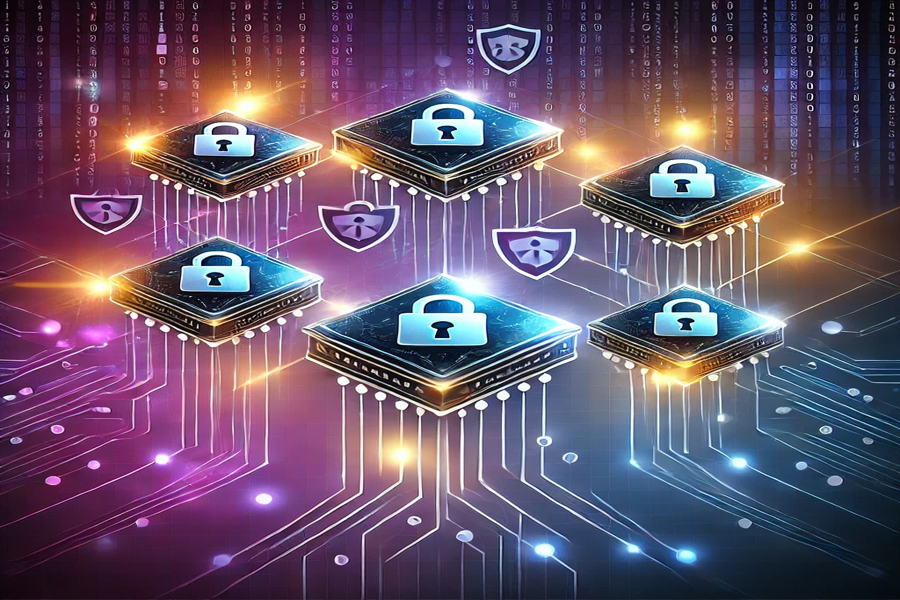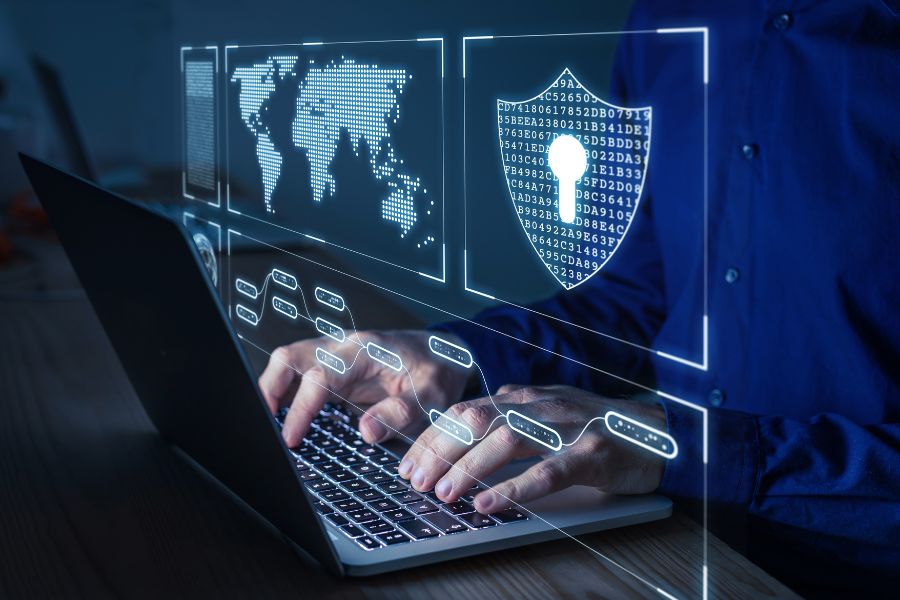Blockchain in Cybersecurity: Applications and Challenges
November 13, 2024, 3 min read
In today’s digital world, protecting data and securing information is more challenging than ever. As cyber threats continue to evolve, traditional security measures sometimes fall short. This is where blockchain technology offers fresh approaches, utilizing its decentralized, transparent, and unchangeable structure to address these new challenges. Blockchain is no longer just a buzzword; it’s gaining real traction across industries, from finance to healthcare, helping to safeguard digital information and prevent breaches.
Exploring Blockchain and Digital Security
Before exploring how blockchain benefits cybersecurity, it’s essential to understand the core ideas behind each:
- Blockchain: A decentralized ledger technology that records and links transactions across multiple computers, making records hard to alter.
- Cybersecurity: The practices, tools, and processes used to protect digital networks, devices, and information from unauthorized access or attacks.
The fusion of these two fields offers a fresh perspective on protecting data and maintaining integrity in digital systems. By capitalizing on blockchain’s strengths, such as its secure and decentralized structure, experts are discovering new ways to safeguard communications, verify identities, and protect information.
How Blockchain Contributes to Security
When integrated with cybersecurity, blockchain offers several advantages that address common vulnerabilities in traditional systems:
- Preserving Data Integrity: Blockchain’s immutability means recorded data cannot be changed without consensus, helping prevent data tampering.
- Decentralized Structure: Blockchain’s decentralized network eliminates single points of failure, enhancing resilience against attacks.
- Advanced Encryption: Using cryptographic techniques, blockchain ensures data is accessible only to authorized parties, bolstering confidentiality.
Additionally, blockchain’s transparency allows for continuous monitoring, aiding rapid detection and response to suspicious activities. This transparency, combined with an unchangeable audit trail, can significantly boost accountability in data protection practices.
Real-World Uses of Blockchain in Data Security
Blockchain’s applications in securing digital information are diverse and continue to expand, offering solutions for various security needs:
- Identity Verification: Blockchain enables secure and decentralized identity systems, reducing identity theft and fraud risks.
- Securing Transactions: In finance, blockchain safeguards transaction integrity, lowering the chances of fraud.
- Protecting IoT Devices: Blockchain offers a secure framework for authenticating IoT devices and preventing unauthorized access.
- Data Breach Mitigation: Blockchain makes it harder for attackers to compromise information at scale by distributing data across multiple nodes.
Beyond these applications, blockchain is being used to improve supply chain security, safeguard intellectual property, and provide secure voting systems. In healthcare, it helps ensure patient data is stored and shared securely, enhancing data privacy.
Challenges and Considerations
Despite its benefits, implementing blockchain for data protection comes with some challenges that need to be addressed:
- Scalability: Current blockchain models’ processing speed and data capacity can limit their use in high-volume environments.
- Energy Demands: Blockchain systems can be energy-intensive, especially in networks using proof-of-work models.
- Regulatory Issues: Legal and regulatory concerns may arise, particularly in international applications of blockchain technology.
- Vulnerabilities: While blockchain is secure, smart contracts and key management practices must be rigorously tested to prevent exploitation.
To address these issues, organizations must carefully plan integration with existing systems and manage resources effectively. Navigating these challenges is critical to achieving blockchain’s benefits in enhancing data protection.
Future Trends in Blockchain Security
The field is evolving rapidly, with several promising trends emerging that combine blockchain with other advanced technologies:
- AI Integration: Merging blockchain with AI can enhance data protection capabilities and aid in quick threat detection and response.
- Quantum-Resistant Algorithms: As quantum computing advances, researchers develop blockchain models that withstand quantum-based attacks.
- Cross-Industry Adoption: Blockchain security is expanding beyond traditional sectors, with new applications in healthcare, logistics, and more.
Looking Ahead
The future of blockchain in security looks promising. We can expect increased integration with AI and machine learning, creating adaptable systems that respond to evolving threats. As technology advances, blockchain solutions for securing cloud data, protecting against denial-of-service attacks, and enhancing identity verification will likely become more sophisticated. By continuing to innovate, blockchain is well-positioned to address some of the most pressing security challenges across industries.
























